Abstract
Hunting and consuming wild mushrooms is an increasingly popular avocation, as well as a means of subsistence for certain groups in the United States. Consuming wild mushrooms is relatively safe for persons with the necessary expert knowledge. Each year, however, tragic deaths or illnesses occur when unsuspecting persons ingest toxic mushrooms. We conjectured that there may be vulnerable subgroups that should be targeted for public service announcements and education about mushrooms. Therefore, we reviewed California's hospital discharge database from 1990 through 1994 to ascertain demographic characteristics and outcomes of "serious" mushroom exposures requiring a hospital admission. Children younger than 5 years have a higher rate of hospital admission for "serious" poisonings. Therefore, parents should be reminded of the need for supervising children in areas with wild mushrooms. We did not find evidence that poisoning rates differed significantly between ethnic or racial groups, but this finding may be limited by a failure of these groups to seek care after becoming ill. We discuss briefly the symptoms and treatment of cases of possibly lethal ingestion of amatoxin-containing species of mushrooms.
Full text
PDF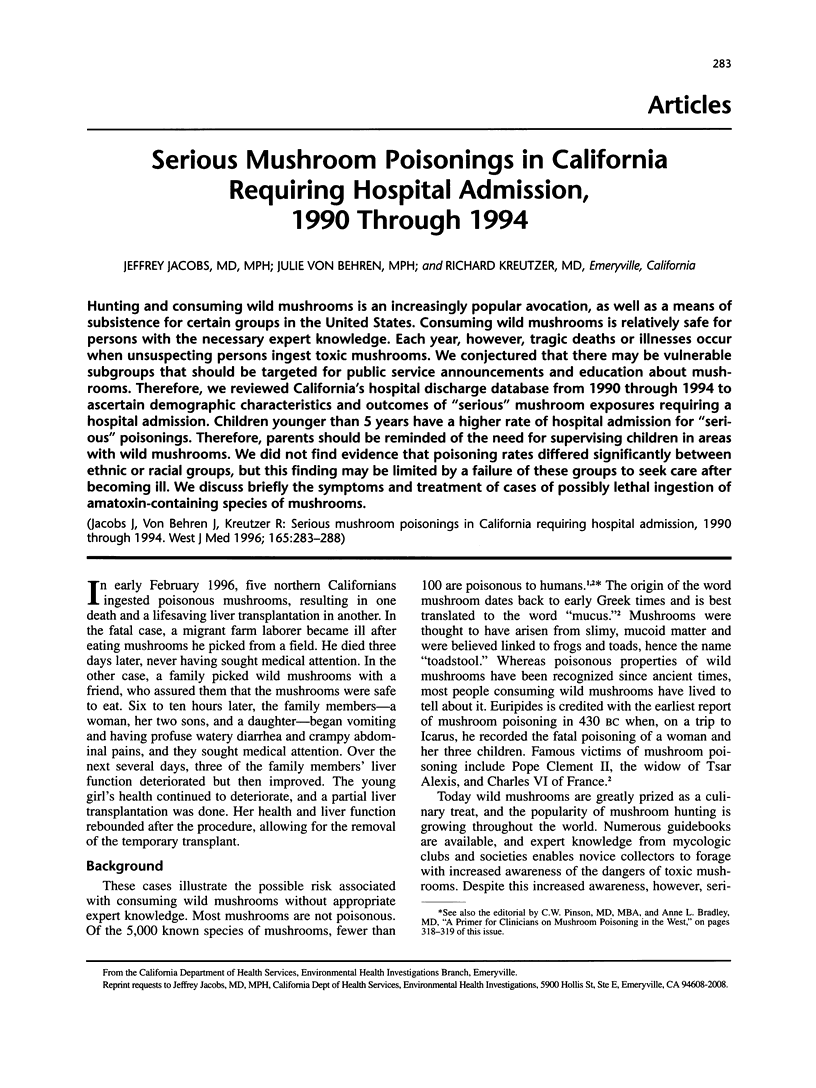
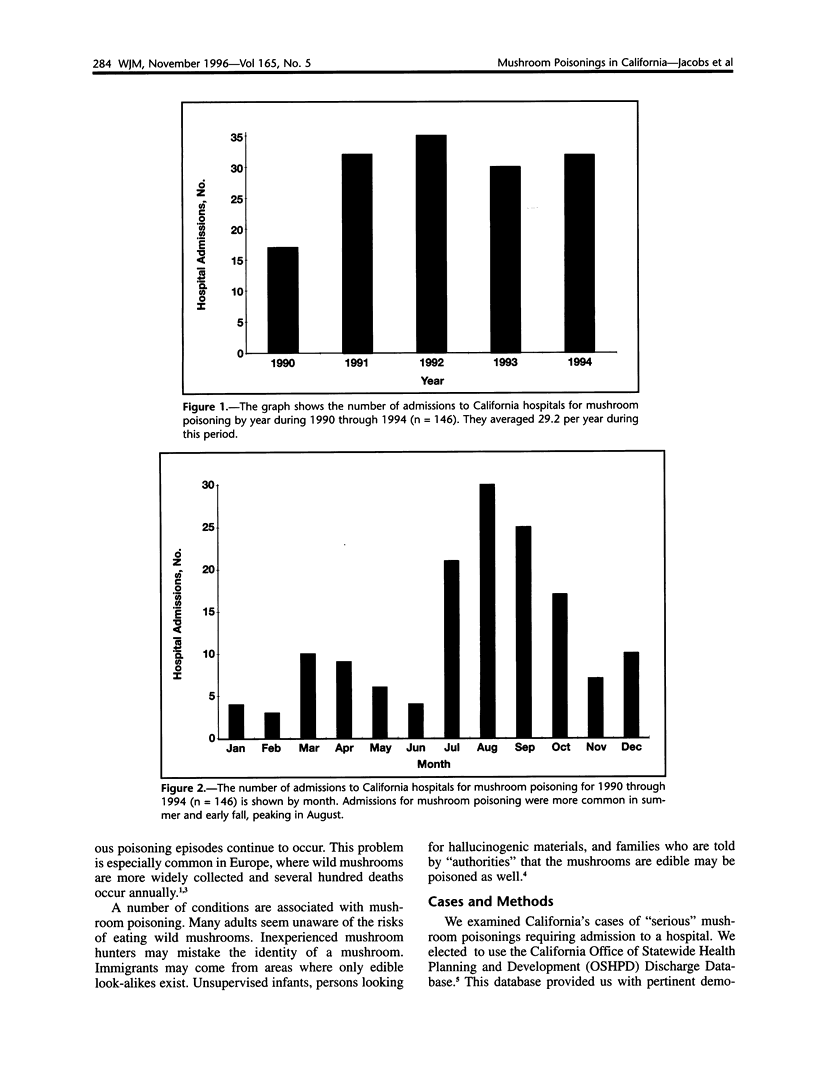
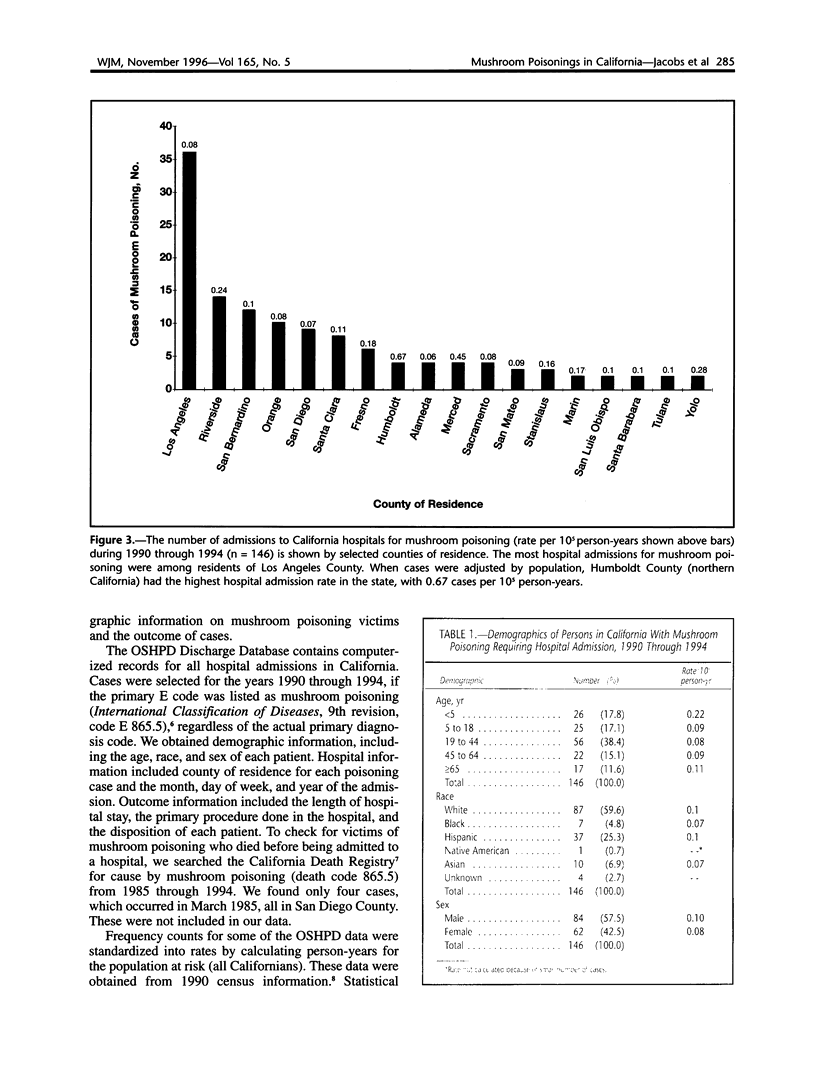
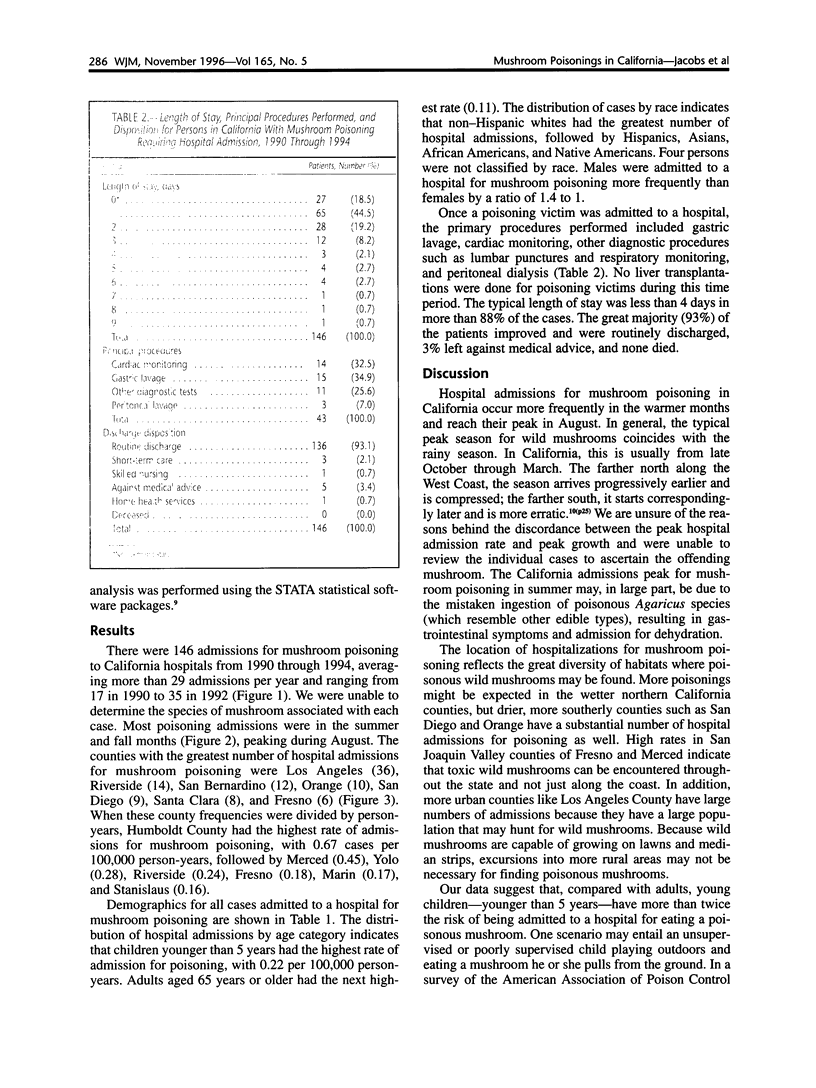
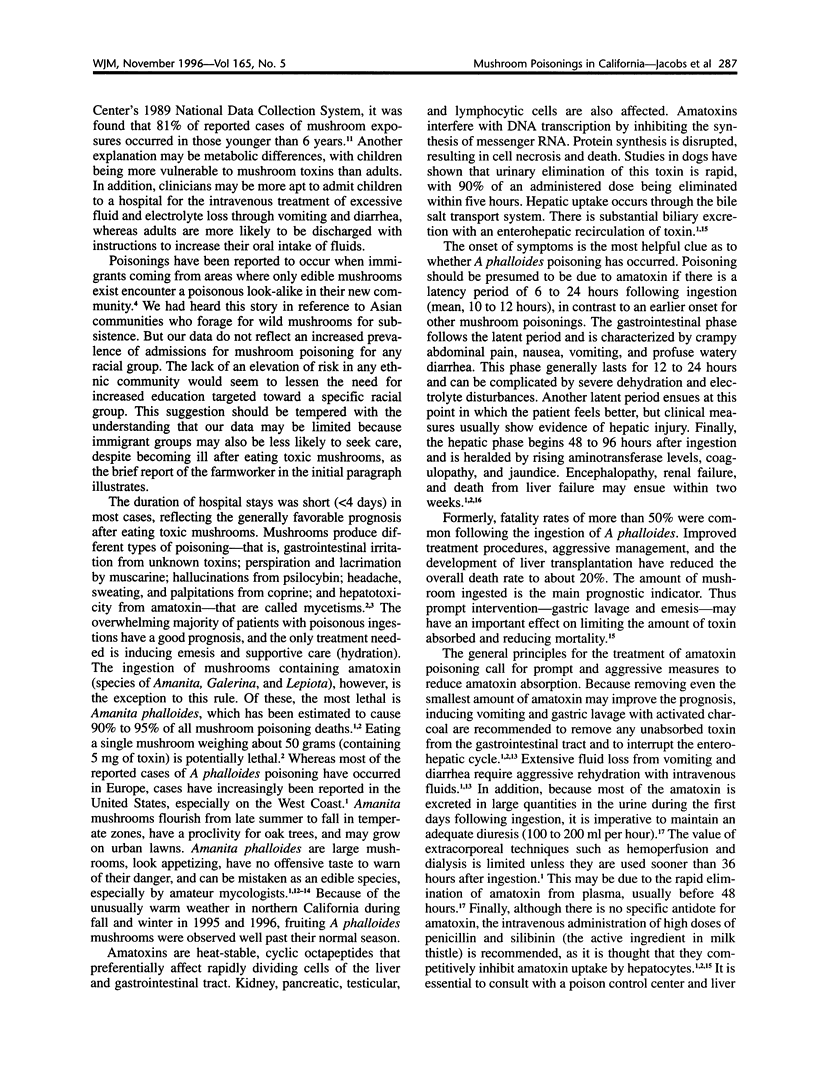
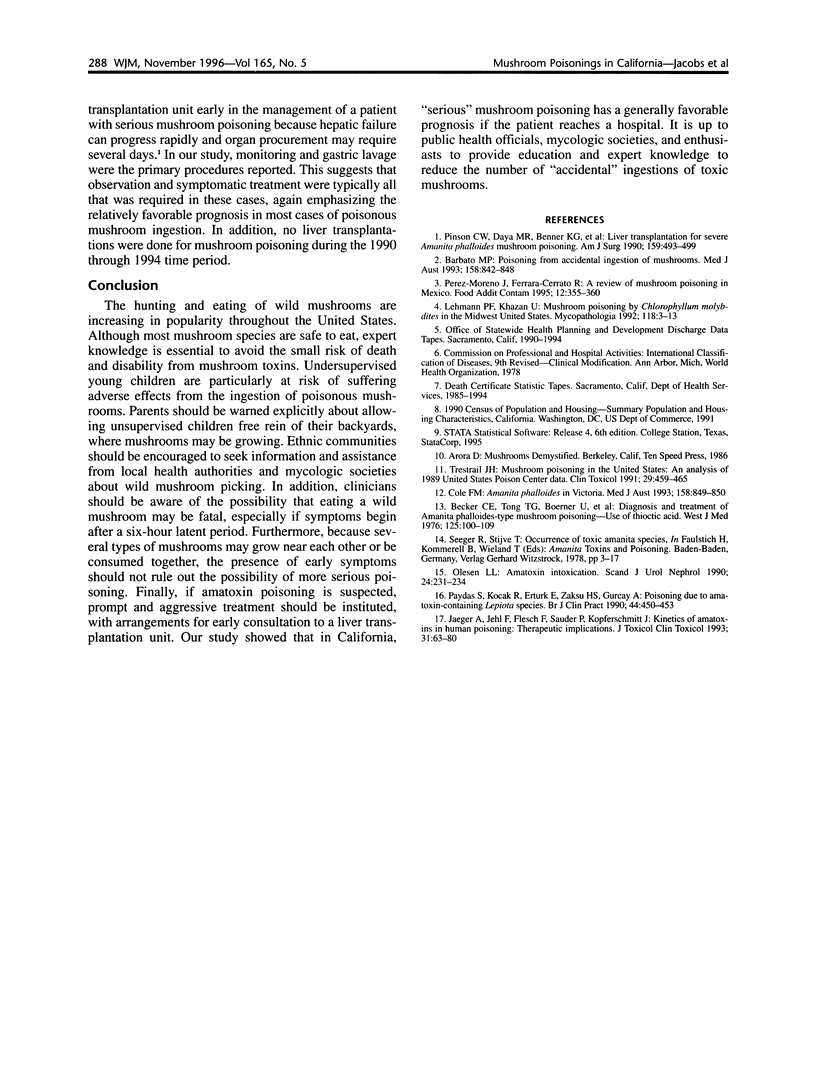
Selected References
These references are in PubMed. This may not be the complete list of references from this article.
- Barbato M. P. Poisoning from accidental ingestion of mushrooms. Med J Aust. 1993 Jun 21;158(12):842–847. doi: 10.5694/j.1326-5377.1993.tb137674.x. [DOI] [PubMed] [Google Scholar]
- Becker C. E., Tong T. G., Boerner U., Roe R. L., ScoTT A. T., MacQuarrie M. B., Bartter F. Diagnosis and treatment of Amanita phalloides-type mushroom poisoning: use of thioctic acid. West J Med. 1976 Aug;125(2):100–109. [PMC free article] [PubMed] [Google Scholar]
- Cole F. M. Amanita phalloides in Victoria. Med J Aust. 1993 Jun 21;158(12):849–850. doi: 10.5694/j.1326-5377.1993.tb137675.x. [DOI] [PubMed] [Google Scholar]
- Jaeger A., Jehl F., Flesch F., Sauder P., Kopferschmitt J. Kinetics of amatoxins in human poisoning: therapeutic implications. J Toxicol Clin Toxicol. 1993;31(1):63–80. doi: 10.3109/15563659309000374. [DOI] [PubMed] [Google Scholar]
- Lehmann P. F., Khazan U. Mushroom poisoning by Chlorophyllum molybdites in the Midwest United States. Cases and a review of the syndrome. Mycopathologia. 1992 Apr;118(1):3–13. doi: 10.1007/BF00472564. [DOI] [PubMed] [Google Scholar]
- Olesen L. L. Amatoxin intoxication. Scand J Urol Nephrol. 1990;24(3):231–234. doi: 10.3109/00365599009180866. [DOI] [PubMed] [Google Scholar]
- Paydas S., Kocak R., Erturk F., Erken E., Zaksu H. S., Gurcay A. Poisoning due to amatoxin-containing Lepiota species. Br J Clin Pract. 1990 Nov;44(11):450–453. [PubMed] [Google Scholar]
- Pinson C. W., Daya M. R., Benner K. G., Norton R. L., Deveney K. E., Ascher N. L., Roberts J. P., Lake J. R., Kurkchubasche A. G., Ragsdale J. W. Liver transplantation for severe Amanita phalloides mushroom poisoning. Am J Surg. 1990 May;159(5):493–499. doi: 10.1016/s0002-9610(05)81254-1. [DOI] [PubMed] [Google Scholar]
- Pérez-Moreno J., Ferrera-Cerrato R. A review of mushroom poisoning in Mexico. Food Addit Contam. 1995 May-Jun;12(3):355–360. doi: 10.1080/02652039509374315. [DOI] [PubMed] [Google Scholar]
- Trestrail J. H., 3rd Mushroom poisoning in the United States--an analysis of 1989 United States Poison Center data. J Toxicol Clin Toxicol. 1991;29(4):459–465. doi: 10.3109/15563659109025741. [DOI] [PubMed] [Google Scholar]


